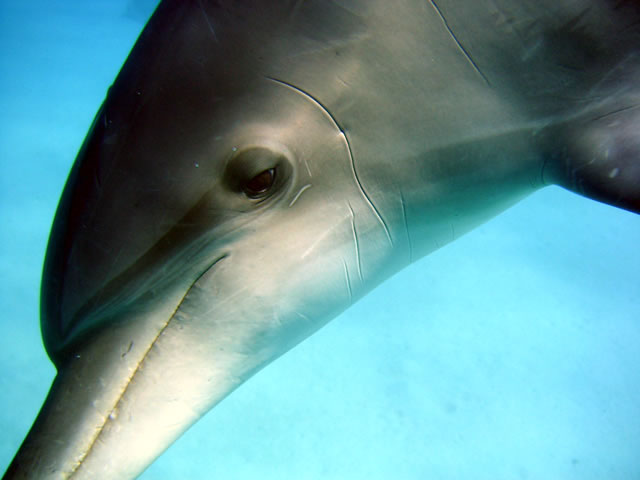
Phylum
Chordata:
Class Mammalia
The following questions will
help you to review the material from the lecture, the laboratory, as
well
as the text.
- Briefly characterize the
main
features of the class Mammalia.
- Approximately how many
mammalian
species exist today?
- What
are the three major lineages of mammals and how do they differ
in size (number of species)?
- When did mammals
originate in
the fossil record?
- What were these early
mammals
like (size, life style, behavior, diet)?
- Is it accurate to state
that the
class Mammalia has a reptilian origin? Explain!
- What are the therapsids?
How are
they associated with the mammals?
- Mammals began an
adaptive radiation
approximately 65 million years ago even though their origin in the
fossil
record is much further back in time. Explain this observation.
- How did the movement of
the continents
due to plate tectonics affect the evolution of mammalian
diversity?
- What
are the main characteristics of
class Mammalia?
- Describe the structure
and function
of the hair/fur of mammals.
- Describe the basic
structure and
pattern of teeth in the mammals. Give examples of how teeth have
become
specialized among different mammalian species.
- What can be learned from
examining
the teeth from different orders of mammals?
- Briefly describe the
general differences
between the digestive systems of an insectivore, an herbivore and a
carnivore (as described in the text)
- Define endothermy. Why
is this
such an important characteristic? Did it give the mammals any
evolutionary
advantages with competing taxa? Any disadvantages?
- What is the influence of
size
on an endotherm in terms of metabolic
activity?
- What is hibernation?
What is its
evolutionary and ecological significance? Describe the process of
hibernation
as demonstrated by the Yellow-bellied Marmot.
- Describe the basic
structure of
mammary glands. What is the function of these glands? What is their
evolutionary
importance of mammary glands for the class Mammalia?
- Why does the composition
of the
milk originating from these glands vary so widely among mammals?
- Do dolphins and whales
have mammary
glands? Why or why not?
- What is the difference
between
horns and antlers? What is their function?
- What are the three major
taxa
of mammals that exist today? How do they differ from each other in
terms
of their biology as well as location?
- Describe the Monotremes.
Where
do you find them? Give two examples. How do they differ from other
mammals?
- The Monotremes are
oviparous.
What is interesting about this observation in terms of thinking
about
the
evolutionary origin of mammals?
- Describe the marsupials.
How do
they differ from other mammals?
- Why are most species of
marsupials
found on the continent Australia?
- Describe the life cycle
of a typical
marsupial (such as a kangaroo). What is the role of diapause in the
life
cycle?
- How do the placental
mammals differ
from the Monotremes and the Marsupials?
- Why did the placental
mammals
come to dominate the class Mammalia? Compare the parental
investments
in
terms of gestation and lactation for marsupials and placental
mammals.
- Describe the role of the
placenta
in the life cycle of placental mammals.
- What are the three
largest orders
of mammals (number of species and fraction of total)? Briefly
characterize
the main features of these orders.
Give examples of species found in each.
- How did sea mammals
evolve? What
characteristics found in extant sea mammals indicate that they had
an
origin
from terrestrial ancestors?
- Describe the life cycle
and natural
history of the Northern Elephant Seal.
- What are the main
characteristics
of the order Primates?
- Briefly describe the
diversity
of the Primates. How are they overall adapted to an arboreal life
style?
- There is a major
evolutionary
shift between monkeys and the great apes (remember the film?). What
kind
of morphological changes occurred as the great apes evolved?
- Describe the differences
and similarities
between Orangutans, Gorillas, Chimpanzees, Bonobos and Humans.
- How do these five
different types
of primates differ from each other in terms of social structure?
- Who is Donald Johanson?
- Who is "Lucy" and how
did she
contribute to our understanding of human origins? When did "Lucy"
live?
- What was the major
ecological
and evolutionary driving forces behind the transition between
arboreal
primates to upright walking ones (hominids).
- At approximately what
time point
in the fossil record do we find stone tools associated with
specimens
from
the genus Homo (Homo habilis)?
- When did modern humans (Homo
sapiens) [i.e. with skulls as we appear today] evolve?
- Is Homo sapiens
a successful
species? Is it able to form stable interactions
(predation/symbiosis/competition)
within the communities in which it lives?
|

|
Recommended
Reading/Resources


